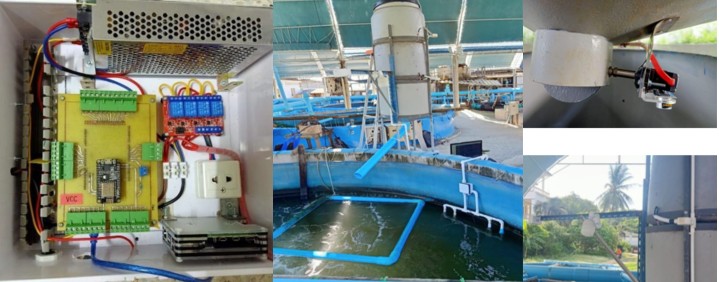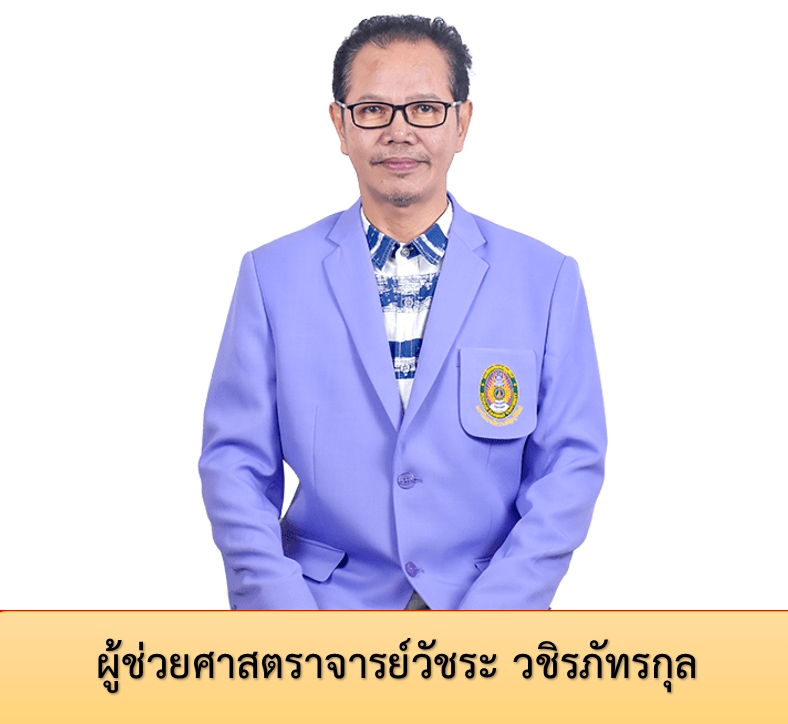การพัฒนาเครื่องให้อาหารอัตโนมัติสำหรับสัตว์น้ำโดยคำนึงถึงปัจจัยสำคัญที่ส่งผลต่อการให้อาหารที่เหมาะสม
คำสำคัญ:
Image Processing, Internet of Thing, Control System, feeding for aquatic animalsบทคัดย่อ
งานวิจัยเป็นการพัฒนาเครื่องให้อาหารอัตโนมัติตามปัจจัยสำคัญที่ส่งผลต่อการกินอาหารของสัตว์น้ำ โดยนำเทคโนโลยีการประมวลผลภาพควบคุมการให้อาหารและติดตามพฤติกรรมสัตว์น้ำผ่านระบบการเชื่อมต่อด้วย IoT เพื่อให้สัตว์น้ำสามารถกินอาหารในปริมาณที่เหมาะสม ภายใต้ปัจจัยสำคัญด้านสิ่งแวดล้อม ประกอบด้วย อุณหภูมิของน้ำ ปริมาณออกซิเจนในน้ำ ความขุ่นของน้ำ ค่า pH ของน้ำ และแสงสว่างที่ส่งผลต่อพฤติกรรมการกินอาหาร การพัฒนาระบบแบ่งออกเป็นสามส่วนคือ ส่วนโปรแกรมประยุกต์บนเว็บที่ใช้ในการควบคุมการทำงานของเครื่องให้อาหารอัตโนมัติสัตว์น้ำตามปัจจัยสำคัญในการกินอาหารและดูข้อมูลต่าง ๆ ส่วนประมวลผลภาพใช้เทคโนโลยีแบบจำลองการตรวจจับวัตถุตามเวลาจริงใช้ในการตรวจจับอาหารในบ่อ และส่วนเครื่องให้อาหารอัตโนมัติสัตว์น้ำตามปัจจัยสำคัญในการกินอาหารที่เหมาะสมกับทุกสภาพแวดล้อม
จากการศึกษาทดลองเครื่องให้อาหารสัตว์น้ำอัตโนมัติตามปัจจัยสำคัญในการกินอาหารควบคุมผ่านโปรแกรมประยุกต์บนเว็บทำให้สามารถให้อาหารสัตว์น้ำอัตโนมัติตามเวลาและปัจจัยสำคัญที่ผู้ใช้กำหนดซึ่งมีการตรวจวัดคุณภาพน้ำโดยตัวรับรู้ สามารถติดตามการกินอาหารสัตว์น้ำโดยการตรวจจับอาหารเหลือในบ่อซึ่งวิธีการประมวลผลภาพมีค่าความแม่นยำร้อยละ 66.09 โดยความผิดพลาดการตรวจจับอาหารมีปัจจัยจากปริมาณแสงที่ไม่สามารถควบคุมได้ทำให้ฟองอากาศมีความคล้ายคลึงกับเม็ดอาหาร และสามารถดูข้อมูลต่าง ๆ สถานะการทำงานของเครื่องผ่านโปรแกรมประยุกต์บนเว็บได้
เอกสารอ้างอิง
อดิศักดิ์ นาวเหนียว, บรรหาญ ลิลา, และ สัญญา ยิ้มศิริ. (2565). ไอโอทีกับการพัฒนาผลิตภัณฑ์เครื่องให้ อาหารแมวอัตโนมัติสำหรับผู้บริโภคกลุ่มดูแลสัตว์เลี้ยงเป็นส่วนหนึ่งของครอบครัว. วารสารวิจัยวิทยาการ จัดการ มหาวิทยาลัยราชภัฏสุรินทร์, 6(3), 142-157.
ปิติพล พลพบู, ธานิล ม่วงพูล, และ วริยา เย็นเปิง. (2566). การพัฒนาเครื่องให้อาหารสุนัขอัตโนมัติด้วย เทคโนโลยีอินเทอร์เน็ตของสรรพสิ่ง. วารสารวิชาการ การจัดการเทคโนโลยีมหาวิทยาลัยราชภัฏ มหาสารคาม, 10(1), 64-74.
สุรเทพ แป้นเกิด, และ สุภษี ดวงใส. (2566). เครื่องควบคุมตู้ปลาอัตโนมัติด้วยไอโอที. วารสารวิจัย มทร. กรุงเทพ, 17(1), 60-68.
จิรวัฒน์ แท่นทอ, สุภลักษณ์ ตาแก้, และ กนกลักษณ์ ศรพระ. (2562). การพัฒนาโมบายแอปพลิเคชัน สำหรับควบคุมเครื่องให้อาหารสัตว์เลี้ยงด้วยการประยุกต์ใช้บอร์ดไมโครคอนโทรลเลอร์ และเทคโนโลยี อินเทอร์เน็ตทุกสรรพสิ่ง. Journal of Information Science & Technology, 9(1).
ณรงค์ฤทธิ์ ภิรมย์นก, และ สุระสิทธิ์ ทรงม้า. (2566). โครงข่ายประสาทเทียมแบบคอนโวลูชันเชิงลึก และ การประมวลผลภาพสำหรับการจำแนกเพศและนับจำนวนปลาหางนกยูง. Journal of Science Innovation for Sustainable Development, 5(2), 1-16.
อัจฉรา ชุมพล, สรายุทธ กรวิรัตน์, รณชัย สังหมื่นเม้า, นรงค์ วิชาผา, ปริชาติ เบอร์ขุนทด, แพรวา สีกาลุน, และ ภัทรพล เภาวะริต. (2566). การคัดแยกคุณภาพของปลาตะเพียนขาวด้วยวิธีการเรียนรู้เชิงลึกและแชทบอทสำหรับการวิเคราะห์ภาพถ่าย. วารสารวิศวกรรมและเทคโนโลยีอุตสาหกรรม มหาวิทยาลัย กาฬสินธุ์, 2(5), 44-51.





